Where the world stands on climate action: Insights from the COP28’s first Global Stocktake
(in provisional translation)
(English ver.) 2024-03-19

Group photograph of the leaders (Prime Minister Kishida on the right side of the back row)"December 1 - World Climate Action Summit" by UN Climate Change is licensed underCC BY 2.0
COP28 was held from November 30 to December 13, 2023, in Dubai, the UAE, where delegates from all around the world gathered to negotiate and discuss climate action.
The first global stocktake concluded during the conference, which is a process for Parties and stakeholders to see where they are collectively making progress toward meeting the goals of the Paris Agreement.
Global Stocktake
COP28 is the 28th Conference of the Parties to the UN Framework Convention on Climate Change, where climate actions, including GHG emissions reduction targets, are discussed. 198 Parties to the convention (the United Nations Framework Convention on Climate Change) participated in COP28. From Japan, Prime Minister Kishida participated in the World Climate Action Summit and ministers and officials of the relevant ministries and agencies also attended the conference.
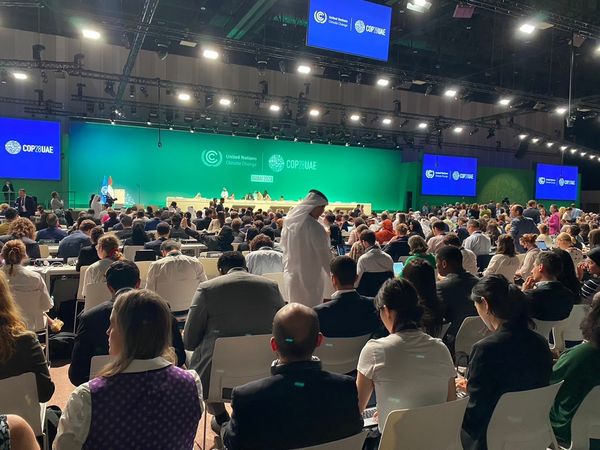
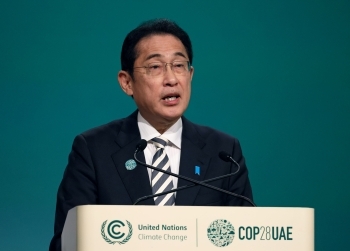
The highlight of the conference was the global stocktake (GST), a process through which Parties and stakeholders can see where they are collectively making progress toward meeting the goals of the Paris Agreement. The Paris Agreement is an international treaty on climate change, which was adopted at COP21 in Paris, in 2015. Its overarching goal is to hold “the increase in the global average temperature to well below 2℃ above pre-industrial levels and pursue efforts to limit the temperature increase to 1.5℃ above pre-industrial levels.” The GST is to be conducted every five years. At COP28, the GST took place for the first time since the adoption of the Paris Agreement.
The GST evaluates global progress toward meeting the goals of the Paris Agreement and informs Parties in updating and enhancing, in a nationally determined manner, their actions and support in accordance with the relevant provisions of the Agreement, as well as in enhancing international cooperation for climate action.
Structure of the Global Stocktake
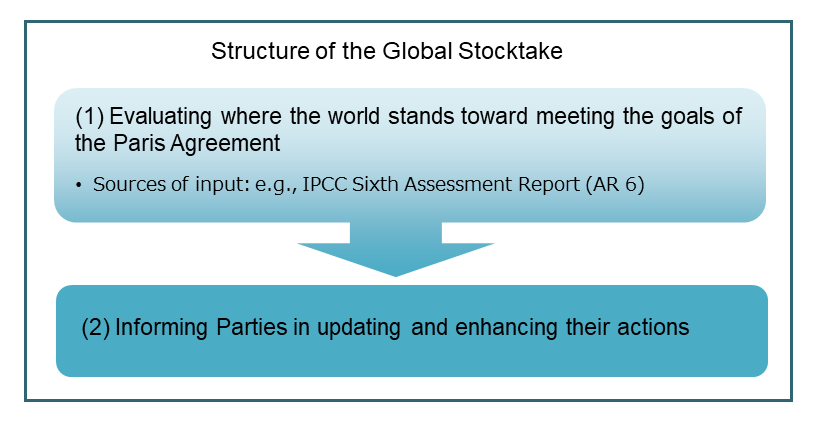
Information collection and technical assessment of the progress does not take place during COP. For the first global stocktake, information collection started in November 2021, and technical assessment in 2022. During the technical assessment phase, three technical dialogues were held, and a synthesis report summarizing the discussion of the dialogues was produced. COP is an opportunity for Parties to consider and discuss future climate actions based on the results of information collection and technical assessment.
After the global stocktake, Parties will update their nationally determined contributions (NDCs). In doing so, Parties shall provide information on how the preparation of their NDCs has been informed by the outcomes of the global stocktake.
Furthermore, Parties are encouraged to submit a report every two years on their progress toward their NDCs as a requirement stipulated in Article 13 of the Paris Agreement which established an “enhanced transparency framework (ETF).” The reports will act as sources of input to be used for the next GST.
By repeating this cycle of global stocktake updating NDCs, and submitting reports under the ETF, we advance steadily toward achieving the goals of the Paris Agreement.
The cycle toward achieving the goals of the Paris Agreement
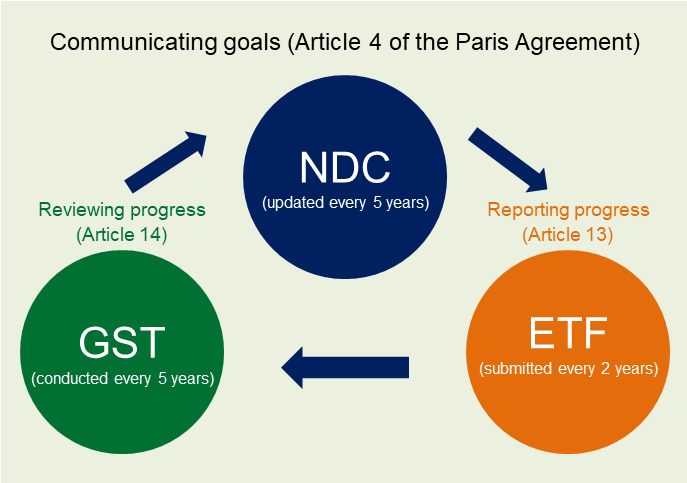
Outcome of the first Global Stocktake
The decision on the outcome of the first global stocktake adopted at COP28
-
 underlines that Parties are not yet collectively on track towards achieving the purpose of the Paris Agreement and its long-term goals.
underlines that Parties are not yet collectively on track towards achieving the purpose of the Paris Agreement and its long-term goals.
-
 emphasizes the need for urgent action and support to keep the 1.5℃ goal within reach and to address the climate crisis in this critical decade.
emphasizes the need for urgent action and support to keep the 1.5℃ goal within reach and to address the climate crisis in this critical decade.
On mitigation, Parties recognize that limiting global warming to 1.5℃ with no or limited overshoot requires deep, rapid and sustained reductions in global greenhouse gas emissions of 43 per cent by 2030 and 60 per cent by 2035 relative to the 2019 level, reaching net zero carbon dioxide emissions by 2050, and peaking emissions at the latest before 2025. Taking into account the Paris Agreement and their different national circumstances, pathways and approaches, the decision also calls on Parties to contribute to the global efforts, in a nationally determined manner, including
-
 Tripling renewable energy capacity globally and doubling the global average annual rate of energy efficiency improvements by 2030
Tripling renewable energy capacity globally and doubling the global average annual rate of energy efficiency improvements by 2030
-
 Accelerating efforts towards the phase-down of unabated coal power
Accelerating efforts towards the phase-down of unabated coal power
-
 Transitioning away from fossil fuels in energy systems, in a just, orderly and equitable manner, accelerating action in this critical decade, so as to achieve net zero by 2050 in keeping with the science
Transitioning away from fossil fuels in energy systems, in a just, orderly and equitable manner, accelerating action in this critical decade, so as to achieve net zero by 2050 in keeping with the science
-
 Accelerating zero- and low-emission technologies, including, inter alia, renewables, nuclear, abatement and removal technologies such as carbon capture and utilization and storage, particularly in hard-to-abate sectors, and low-carbon hydrogen production
Accelerating zero- and low-emission technologies, including, inter alia, renewables, nuclear, abatement and removal technologies such as carbon capture and utilization and storage, particularly in hard-to-abate sectors, and low-carbon hydrogen production
-
 Accelerating the reduction of emissions from road transport on a range of pathways, including through development of infrastructure and rapid deployment of zero-and low-emission vehicles
Accelerating the reduction of emissions from road transport on a range of pathways, including through development of infrastructure and rapid deployment of zero-and low-emission vehicles
Japan and international climate initiatives
During COP28, Japan joined various international initiatives on climate change and communicated its efforts at relevant meetings. Specifically, Japan joined:
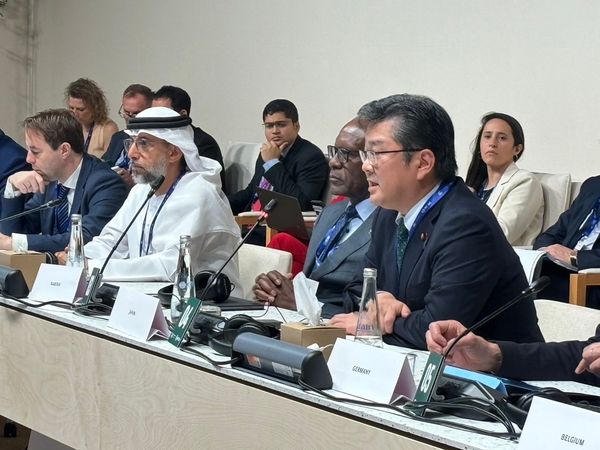
-
 The Global Renewables and Energy Efficiency Pledge led by the UAE and the EU to triple the world’s installed renewable energy power generation capacity and double the global average annual rate of energy efficiency improvements
The Global Renewables and Energy Efficiency Pledge led by the UAE and the EU to triple the world’s installed renewable energy power generation capacity and double the global average annual rate of energy efficiency improvements
-
 The Declaration to "Triple Nuclear", including a cooperation policy toward the ambitious goal of "tripling global nuclear power capacity from 2020 by 2050, recognizing the different domestic circumstances of each participant" led by the UAE and the US, among others.
The Declaration to "Triple Nuclear", including a cooperation policy toward the ambitious goal of "tripling global nuclear power capacity from 2020 by 2050, recognizing the different domestic circumstances of each participant" led by the UAE and the US, among others.
-
 "The 'Sapporo Five' Statement" by Canada, Japan, France, the UK and the US to achieve a resilient supply chain for nuclear fuel
"The 'Sapporo Five' Statement" by Canada, Japan, France, the UK and the US to achieve a resilient supply chain for nuclear fuel
-
 "Carbon Management Challenge" led by the US to accelerate the development and deployment of technologies for carbon dioxide capture, utilization, and storage (CCUS) and carbon dioxide removal (CDR)
"Carbon Management Challenge" led by the US to accelerate the development and deployment of technologies for carbon dioxide capture, utilization, and storage (CCUS) and carbon dioxide removal (CDR)
-
 The Green Public Procurement Statement of Intent led by the United Nations Industrial Development Organization (UNIDO) and joined by Japan (GX advocate), the UK, the USA, Germany, Canada, Austria, and the UAE, stating their intention to proactively engage in green public procurement with the aim of creating demand for green materials such as steel and cement
The Green Public Procurement Statement of Intent led by the United Nations Industrial Development Organization (UNIDO) and joined by Japan (GX advocate), the UK, the USA, Germany, Canada, Austria, and the UAE, stating their intention to proactively engage in green public procurement with the aim of creating demand for green materials such as steel and cement
-
 Global Cooling Pledge led by the United Nations Environment Programme (UNEP) and the UAE (COP28 Presidency) to achieve sustainable cooling
Global Cooling Pledge led by the United Nations Environment Programme (UNEP) and the UAE (COP28 Presidency) to achieve sustainable cooling
At meetings related to these initiatives that were held onsite at COP28, Japan extensively communicated its climate policy and contributions to the international community.
According to the outcome of the first global stocktake, Parties are not yet collectively on track towards achieving the purpose of the Paris Agreement and its long-term goals. Thus, it is essential for Parties to take actions on a global scale. To this end, Parties must make steady efforts toward achieving their own reduction targets through various pathways based on their national circumstances. Furthermore, each party is expected to take advantage of its strengths and contribute to global emissions reduction.
There will be more focus on how each party will formulate its next NDC, considering the outcome of the GST, and implement its climate action plans.
Divisions in Charge
About this article
Global environment Affairs Office, Industrial Science, Technology and Environment Policy Bureau, METI
About the Special Contents
Research and Public Relations Office, Commissioner’s Secretariat, ANRE
![]() The original Japanese text of this article; Click here
The original Japanese text of this article; Click here